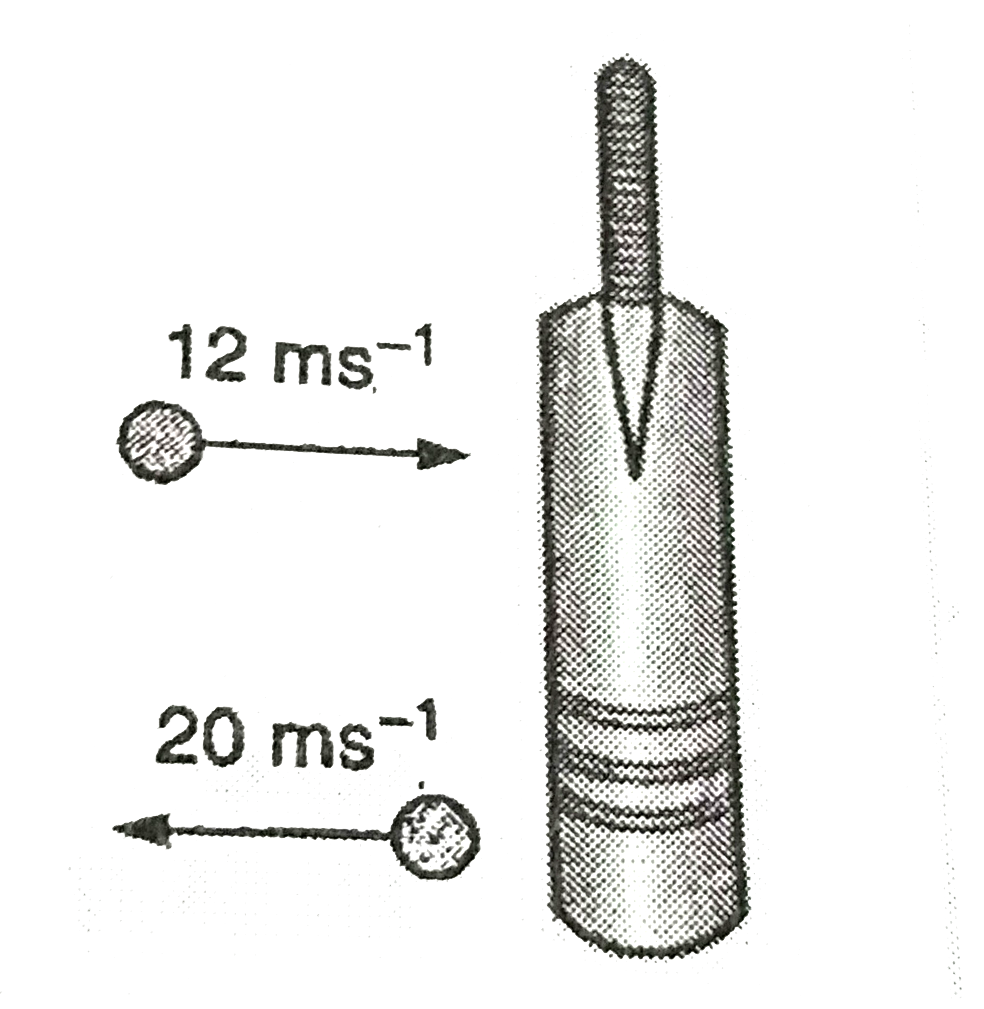A ball of mass 10g is initially moving with a velocity of 50ms−1 On applying a constant force a ball for 2.0s, it acquires a velocity of 70ms−1 Calculate the acceleration of ball
To calculate the acceleration of the ball, we can use the formula for acceleration, which is defined as the rate of change of velocity. The formula is:
a=Vf−ViΔt
Where:
- a is the acceleration,
- Vf is the final velocity,
- Vi is the initial velocity,
- Δt is the time duration over which the change occurs.
1. Identify the given values:
- Mass of the ball, m=10g=0.01kg (Note: We convert grams to kilograms for standard SI units)
- Initial velocity, Vi=50m/s
- Final velocity, Vf=70m/s
- Time duration, Δt=2.0s
2. Substitute the values into the acceleration formula:
a=Vf−ViΔt=70m/s−50m/s2.0s
3. Calculate the change in velocity:
Vf−Vi=70m/s−50m/s=20m/s
4. Substitute the change in velocity back into the formula:
a=20m/s2.0s
5. Perform the division:
a=10m/s2
Final Answer:
The acceleration of the ball is 10m/s2.
- a is the acceleration,
- Vf is the final velocity,
- Vi is the initial velocity,
- Δt is the time duration over which the change occurs.
- Mass of the ball, m=10g=0.01kg (Note: We convert grams to kilograms for standard SI units)
- Initial velocity, Vi=50m/s
- Final velocity, Vf=70m/s
- Time duration, Δt=2.0s
a=Vf−ViΔt=70m/s−50m/s2.0s
Vf−Vi=70m/s−50m/s=20m/s
a=20m/s2.0s
a=10m/s2
The acceleration of the ball is 10m/s2.
Topper's Solved these Questions
- BOOK - MTG IIT JEE FOUNDATIONCHAPTER - FORCE AND LAWS OF MOTIONEXERCISE - SOLVED EXAMPLES13videos
FORCE AND LAWS OF MOTION
- BOOK - MTG IIT JEE FOUNDATIONCHAPTER - FORCE AND LAWS OF MOTIONEXERCISE - NCERT SECTION37videos
FORCE AND LAWS OF MOTION
- BOOK - MTG IIT JEE FOUNDATIONCHAPTER - FOOTSTEPS TOWARDS NEETEXERCISE - Multiple Choice Question45videos
FOOTSTEPS TOWARDS NEET
- BOOK - MTG IIT JEE FOUNDATIONCHAPTER - GRAVITATION EXERCISE - Olympiad/HOTS Corner20videos
GRAVITATION
Similar Questions
A ball of mass 10g is initially moving with a velocity of 50ms−1 On applying a constant force a ball for 2.0s, it acquires a velocity of 70ms−1 calculate
the initial momentum of ballView SolutionA ball of mass 10g is initially moving with a velocity of 50ms−1 On applying a constant force a ball for 2.0s, it acquires a velocity of 70ms−1 calculate
the final momentum of ballView Solution
Knowledge Check
- Question 1 - Select One
A ball of mass 0.2 kg moves with a velocity of 20m/sec and it stops in 0.1 sec , then the force on the ball is
A40 NB20 NC4 ND2 N - Question 2 - Select One
A ball of mass 1 kg moving with a velocity of 0.4 ms−1 collides with another stationary ball. After the collision, the first ball moves with a velocity of 0.3ms1 in a direction making an angle of 90∘ with its initial direction. The momentum of the second ball after the collision will be (in kg ms−1)
A0.1B0.3C0.5D0.7 - Question 3 - Select One
A ball of mass 0.5 kg is moving with a velocity of 2ms−1. It if subjected to a force of x Newton for 2s. Because of this force, the ball moves with a velocity of 3ms−1 . The value of x is :
A5NB8.25NC0.25ND1N
A ball of mass 25 g, moving with a velocity of 2ms−1 is stopped within 5 cm. The average resistance offered to the ball is
View SolutionA ball of mass 0.1 kg is thrown against a wall. It strikes the wall normally with a velocity of 30 ms−1 and rebounds with a velocity of 20 ms−1. Calculate the impulse of the force exerted by the wall.
View SolutionA bicycle initially moving with a velocity 5.0 ms−1 accelerates for 5 s at a rate of 2 ms−2. What will be its final velocity?
View SolutionA cricket ball of mass 150 g is moving with a speed of 12ms−1 and is hit by a bat so that the ball is turned back with velocity of 20ms−1 if duration of contact between bat and ball is 0.01 s then:
 View Solution
View SolutionA cricket ball of mass 150g is moving with a velocity of 12 m/s and is hit by a bat so that the ball is turned back with a velocity ishit by a bat so that the ball is turned back with a velocity of 20 m/s. The force of blow acts for 0.01 s on the ball. What is the averate force exerted by the bat on the ball?
View Solution

